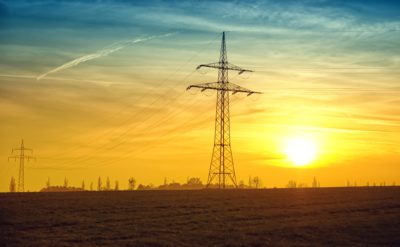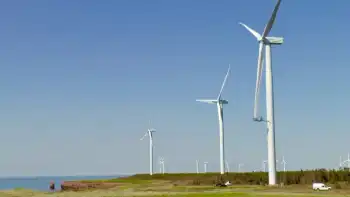Allegheny Power recognizes National Electric Safety Month
By Business Wire
Protective Relay Training - Basic
Our customized live online or in‑person group training can be delivered to your staff at your location.

- Live Online
- 12 hours Instructor-led
- Group Training Available
According to the U.S. Consumer Product Safety Commission, each year there are over 400 electrocutions in the United States. Approximately 180 of these are related to consumer products such as appliances, power tools, or other useful items around the house. Twenty percent of these are caused by faulty or exposed wiring, which leads us to another frightening statistic.
Information gathered by the National Fire Protection Association indicates that there are over 30,000 home fires annually associated with electrical distribution systems (wiring), resulting in over 200 deaths, nearly 1,000 injuries and over $600 million in property damage.
“Allegheny Power considers electrical safety a top priority,” said David E. Flitman, President, Allegheny Power. “We want to use Electrical Safety Month to help people understand that all accidents are preventable. The statistics are alarming, but everyone can take steps to make electrical safety a habit, and by doing so, prevent electrical injuries.”
As a public service, Allegheny Power is providing the following information to give support to its customers and encourage a better understanding of electrical safety.
Outdoor Safety Tips
• Overhead power lines are not insulated. Before working outdoors, take a survey of overhead lines and potential hazards.
• Never touch a fallen wire or any object that is in contact with one. Always assume that a fallen wire is energized and keep clear of it.
• Keep ladders – especially metal ones – away from electrical lines at all times. Pay particular attention when moving a ladder to ensure it does not come into contact with any power lines.
• Never climb a tree that has power lines running through it or near it. In addition, never climb poles or fences surrounding substations or other electrical devices – the equipment inside can be charged with thousands of volts of electricity.
• When moving any object around your home or business, keep clear from power lines.
• Electricity and water do not mix. Keep power tools, radios, appliances, electric lawn mowers and other lawn tools away from swimming pools, sprinklers, garden hoses and wet grass. Never operate electric tools in the rain.
• Be sure you have ground fault circuit interrupter (GFCI) protection on all outdoor outlets; portable GFCIs are available from most hardware and home improvement stores.
Indoor Safety Tips
• Counterfeit electrical products can cause fires, shocks and electrocutions. Scrutinize the product’s packaging and the labeling, and look for a certification mark from an independent testing organization, such as Underwriters Laboratories (UL).
• Never use an electrical appliance near water, when your hands are wet, or when you are working around wet areas. Use and store appliances away from the sink, bathtub and shower. Keep hair dryers, curling irons and similar devices away from water.
• Inspect appliance cords periodically and replace if frayed or damaged. If you need an extension cord, use a heavy-duty cord and make sure it is in good condition. Always connect appliances to a grounded wall outlet and not to a light fixture. Disconnect appliances by grasping the plug – never by pulling on the cord.
• Before cleaning or repairing any appliance, be sure it is disconnected or the circuit is turned off. Never use an appliance that is sparking, making unusual noises or not operating properly.
• Inspect power tools often and make sure their electrical cords are free of defects. Store power tools in a dry area – dampness can damage tools and create a shock hazard when they are used. Never use power tools around wet areas or when standing on a wet surface.
• Never insert anything into an electrical outlet except the plug of an appliance. To protect small children, “dummy” plugs can be installed in unused outlets. In addition, never leave light bulb sockets empty. If a bulb burns out, leave it in the socket until it can be replaced.











